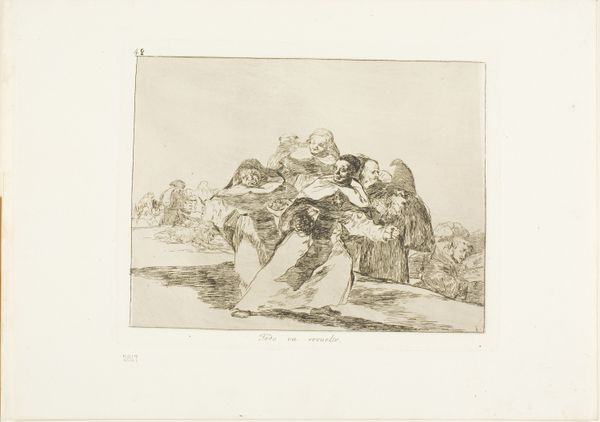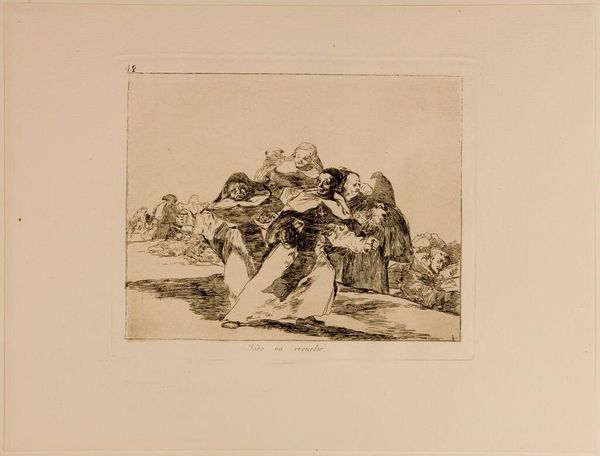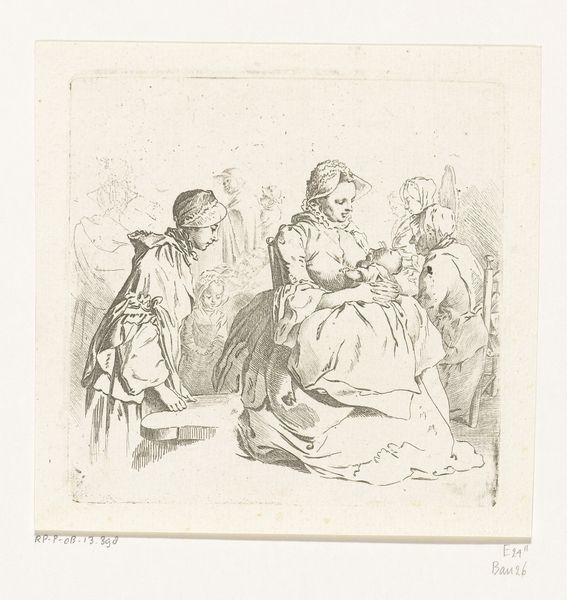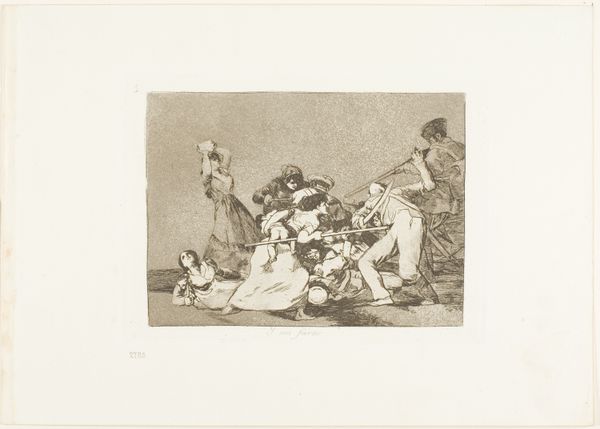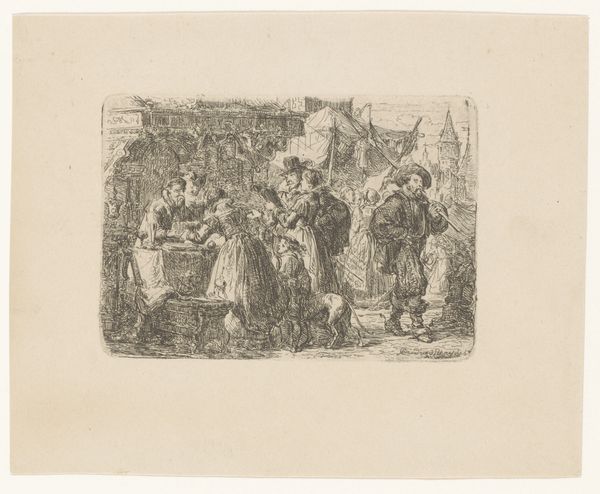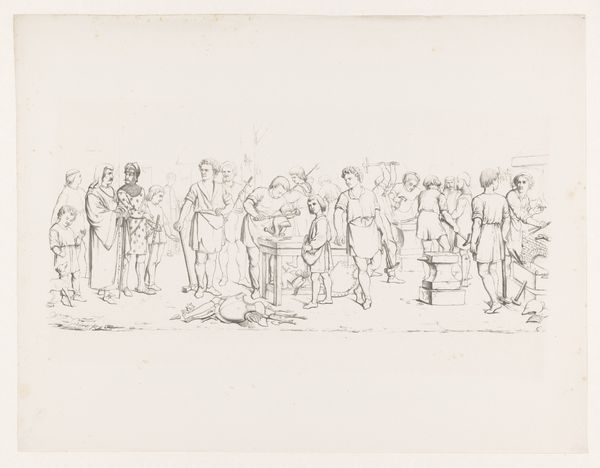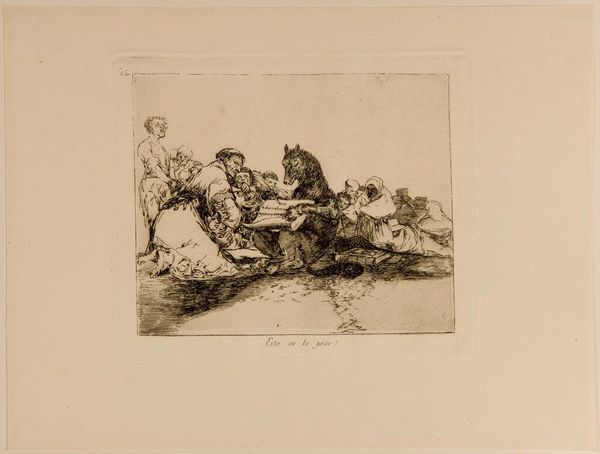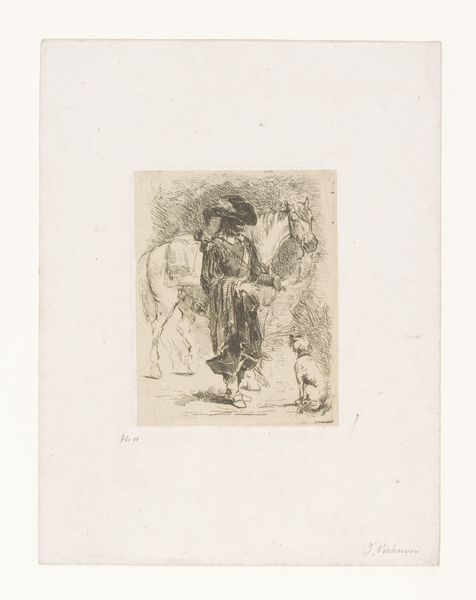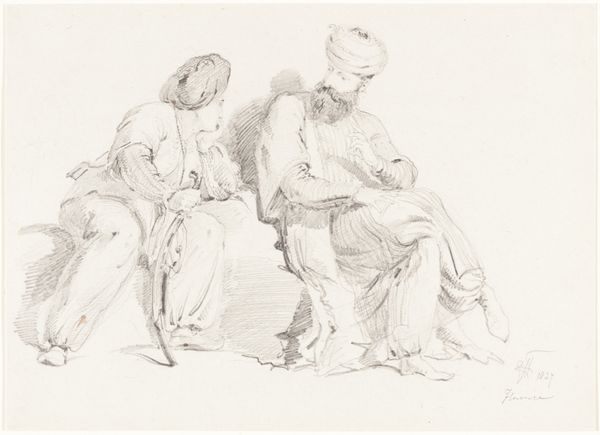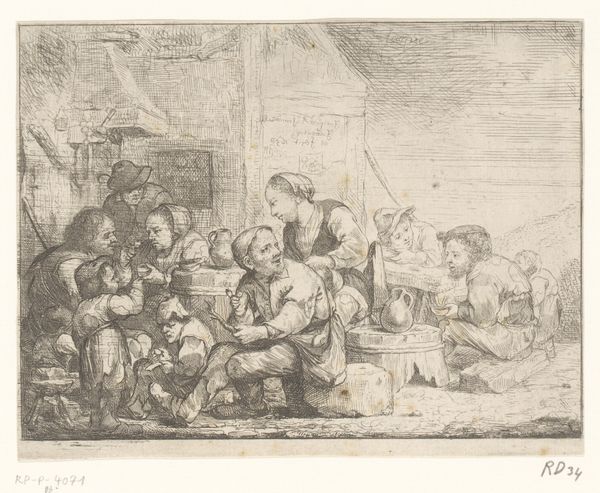
drawing, lithograph, print, paper, ink
#
drawing
#
ink drawing
#
lithograph
# print
#
pen sketch
#
paper
#
ink
#
group-portraits
#
romanticism
#
genre-painting
Dimensions: 180 × 180 mm (image); 245 × 290 mm (sheet)
Copyright: Public Domain
Francisco Goya made this etching, “The Andalusian Dance,” sometime in the late 18th or early 19th century. It offers a glimpse into Spanish popular culture, but also hints at the social tensions of the time. Dance was a central part of Spanish social life, and Andalusia was particularly known for its vibrant traditions. But Goya made this print during a time of upheaval. Spain was facing political instability and social unrest, and the enlightenment ideals were challenging traditional norms. It’s hard to know how Goya himself felt, but his art often questions authority and depicts the lives of ordinary people. Prints like this were part of a growing art market, where artists could reach a wider audience outside the traditional patronage system. This print challenges the norms of the Royal Academy of Fine Arts of San Fernando. To understand Goya better, we can look at historical documents, letters, and other artworks from the period. Art is always connected to its social and institutional context, reflecting the spirit and tensions of its time.
Comments
No comments
Be the first to comment and join the conversation on the ultimate creative platform.

